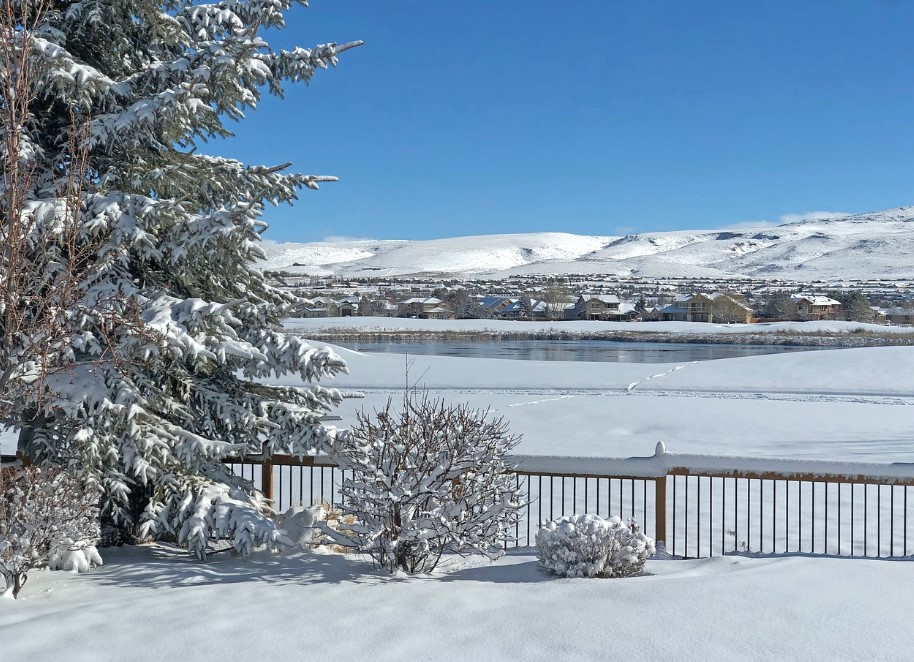Golf is often associated with sunny days and lush green fairways, but die-hard golfers know that their love for the game doesn’t wane just because the weather takes a turn for the worse. Playing golf in cold and snowy conditions can be a rewarding and challenging experience, but it requires a different approach compared to those sunny summer rounds. In this article, we’ll explore seven essential tips to help you not only survive but also thrive when golfing in winter’s grip.

Dressing for Success
One of the most crucial aspects of playing golf in cold and snowy conditions is proper attire. Dressing appropriately is not only about keeping warm but also ensuring that your movements are not restricted. Start with a moisture-wicking base layer to keep sweat away from your skin. Layering is key; choose a lightweight, insulated golf jacket to trap heat while allowing for freedom of movement. Don’t forget thermal socks and waterproof, insulated golf shoes to keep your feet dry and warm.
Selecting the Right Golf Ball
In cold weather, the golf ball you choose can make a significant difference in your game. Cold air is denser, which can impact the distance the ball travels. To counter this, opt for a low-compression golf ball, which is more suitable for cold weather golf playing conditions. These balls have softer cores, which allow for more compression and distance, even when the temperatures drop. Lower compression balls also provide a better feel and control on the greens.
Adjust Your Swing and Expectations
Playing golf in the cold and snow requires some adjustments to your swing and expectations. The cold weather can make your muscles tighter, leading to a reduced range of motion. To combat this, take extra time to stretch and warm up before your round. It’s crucial to maintain flexibility in your joints and muscles to ensure your swing remains consistent.
Additionally, understand that the ball may not travel as far in colder conditions. Lower temperatures can decrease your club’s bounce and reduce the ball’s compression. As a result, you may need to club up and aim for a smoother, controlled swing rather than trying to crush the ball.
Course Management and Shot Selection
When playing golf in cold and snowy conditions, it’s essential to adapt your course management and shot selection. First and foremost, be cautious when walking on the course as icy patches can be slippery. Golf carts may not be available in these conditions, so prepare for a longer, slower round on foot. When selecting your shots, prioritize accuracy over distance. Focus on hitting fairways and greens, as getting out of the rough or a sand trap can be especially challenging in cold, wet conditions.
Keep Your Equipment Dry
Playing golf in the snow and cold often means dealing with wet equipment. To maintain the performance and longevity of your gear, it’s crucial to keep it dry. Invest in a good golf bag cover or rain cover to protect your clubs. Use a towel to wipe down your clubheads and grips after every shot, as snow and moisture can affect your grip and the clubface’s interaction with the ball. Additionally, bring waterproof covers for your rangefinder or GPS device, and ensure your golf balls stay dry between shots.
Staying Hydrated and Nourished
In cold conditions, it’s easy to underestimate the importance of staying hydrated and nourished. While you may not feel as thirsty as you would on a hot summer day, your body still needs water to function correctly. Dehydration can lead to a decrease in energy levels and concentration, which can negatively impact your golf game. Carry a thermos with a warm beverage, like hot tea or coffee, to keep you warm and hydrated on the course. Nourishment is equally vital. Consider packing energy bars, nuts, or other high-energy snacks to keep your body fueled throughout the round.
Prioritize Safety Above All
While golfing in cold and snowy conditions can be a beautiful and invigorating experience, ensuring your safety is paramount. The winter environment introduces a unique set of challenges and potential hazards that demand your full attention. To begin with, wearing appropriate footwear with non-slip soles is a crucial step to avoid slipping on icy patches that can lurk on the course. Even the most seasoned golfer can take a spill in these treacherous conditions, so investing in proper footwear is a small but vital precaution. Keeping a close eye on the weather forecast is equally important. Winter weather can be unpredictable, and conditions can deteriorate rapidly.

Golfing in cold and snowy conditions can be a unique and enjoyable experience for those who are prepared. Proper attire, golf ball selection, swing adjustments, course management, equipment care, and maintaining hydration and nourishment are all essential aspects of mastering the art of winter golf. Embracing the challenges of the cold and snowy weather can improve your skills, make you a more well-rounded golfer, and provide you with an unmatched sense of accomplishment when you conquer the elements and the golf course.
 Barnorama All Fun In The Barn
Barnorama All Fun In The Barn